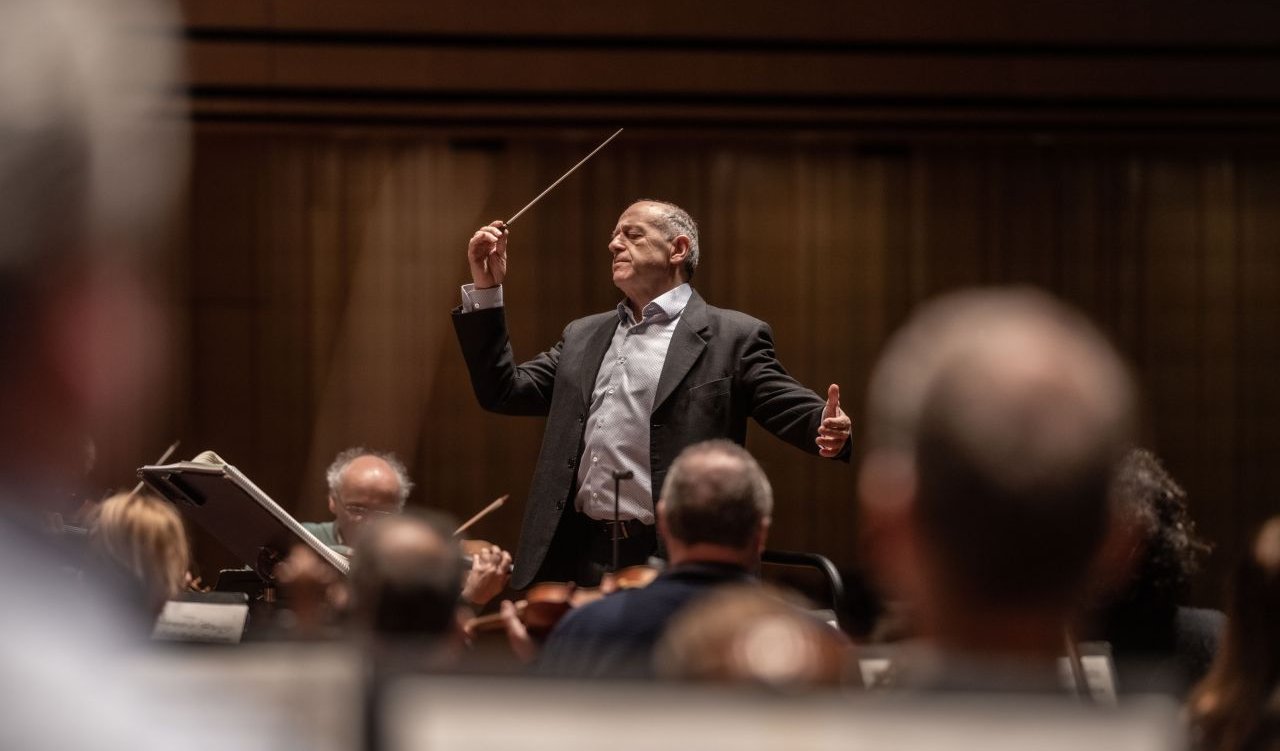

Program
Featuring
Other information
The event is about 2.5 hours long.
About the event
A grim face, a long beard, conservative music – that’s how Brahms lives in many people’s minds. Some do not accept that he wrote the light Hungarian dances, others are amazed that the same composer wrote one of the most extensive and difficult piano concertos in the history of music. It is also quite incredible that after fifteen years of maturing his first symphony, the second was completed in just four months. This time, the BFO paints a cheerful portrait of Brahms, performing two large-scale compositions, each accompanied by a Hungarian dance. Pianist Nicolas Namoradze is a recurring guest of the Budapest Festival Orchestra. His performances have been hailed as “sparkling… sensitive and coloristic” by The New York Times and “weighty yet exquisite, and exactingly precise in tone and touch“ by The Guardian.
Brahms published the four-hand piano versions of the twenty-one Hungarian Dances in two phases, in four volumes. The author became acquainted with Hungarian Gypsy music via Ede Reményi, especially the csárdás, which inspired the dances Brahms called arrangements. The works were an immediate success, but it was in their orchestral arrangements that they became best known. Only three of these are arranged by Brahms, such as the opening Hungarian Dance No 10. The fast movement marked presto is like a musical flash. The Dance No. 7 after the interval is slightly more measured, playful, and contrasting in tempo. The main stylistic features of both dances are the contrasts and sharp accents.
“I have written a tiny piano concerto with a tiny and charming scherzo”, Brahms wrote about one of the most powerful works of his oeuvre. He started composing the concerto in 1878 and finished it three years later. The world premiere was held in Budapest, conducted by Sándor Erkel with the composer as soloist. The first movement begins, unconventionally, with a single horn instead of the full orchestra, to which the piano responds. The lyrical dialogue is interrupted by an outburst from the soloist, followed by an endless series of musical themes. Brahms then inserts a scherzo – the most tempestuous movement of the work – and only then comes the usual slow movement. This music is characterized by a dreamy cello solo and a move into distant tonalities. The work concludes with an ever-increasing, exhilarating finale.
One of the reasons Brahms set aside the first drafts of the Piano Concerto was to write his Symphony No. 2 in a single summer. The tranquility of the beautiful Wörthersee, the setting of where he composed, is echoed in the music, where the pastoral mood prevails in contrast to the pains of Symphony No. 1. The whole piece is built on the three-note motif in the bass that opens the first movement. The slow movement introduced by the cello brings a few clouds, but the oboe solo over a plucked accompaniment banishes them in the third movement. The finale is some of Brahms’s most liberated music.
Did you know? Brahms’s Hungarian Dances Nos. 7 and 10 premiered in 1869, while his Piano Concerto No. 2 premiered on November 9, 1881 in Budapest, with the composer performing the solo and Sándor Erkel conducting; his Symphony No. 2 premiered in Vienna on December 30, 1877, with János Richter conducting; the Festival Orchestra most recently performed Hungarian Dance No. 10 on August 30, 2011 in San Sebastián (conductor: Iván Fischer); the orchestra’s most recent performance of Piano Concerto No. 2 was on July 4, 2014 in Bad Kissing (soloist: Arcadi Volodos; conductor: Iván Fischer); the BFO most recently played Hungarian Dance No. 7 on March 26, 2015 in Abu Dhabi (conductor: Iván Fischer); the BFO’s most recent performance of Symphony No. 2 was on September 29, 2012 in Brugge (conductor: Iván Fischer).
Contemporary events: the novel The Idiot, by the Russian author Fyodor Dostoevsky, was published in 1869 / the opera Das Rheingold, by the German composer Richard Wagner, premiered in Munich on September 22, 1869 / the essay The Subjection of Women by the English philosopher and economist John Stuart Mill was published in 1869 / James A. Garfield, the 20th president of the United States, was assassinated in Washington on July 2, 1881 / the Russian painter Ilya Repin painted his portrait of Modest Mussorgsky in 1881 / Franz Liszt composed his piano piece Gray Clouds in the summer of 1881 / the French painter Pierre-Auguste Renoir painted his picture Luncheon of the Boating Party in 1881 / János Arany began writing the poems of his “Őszikék” set in his “locked book” in 1877 / the American inventor Thomas Alva Edison presented the phonograph, the first device capable of recording and playing sound, in 1877 / the opera Samson and Delilah, by the French composer Camille Saint-Saëns, premiered in Weimar on December 2, 1877